The DPRK Power Sector: Data and Interconnection Options
By Jae-Young Yoon
August 9, 2011
This paper was originally published as part of a special issue of the Korean Journal of Defense Analysis (Volume 23 Number 2 Summer 2011) on the DPRK Energy and Minerals Sectors.
Much of the material in the above special issue was adopted from research presented at the Nautilus Institute’s 2010 DPRK Energy and Minerals Working Group Meeting in Beijing. Additional reports from the workshop are available here.
Nautilus invites your contributions to this forum, including any responses to this report.
——————–
CONTENTS
IV. Nautilus invites your responses
I. Introduction
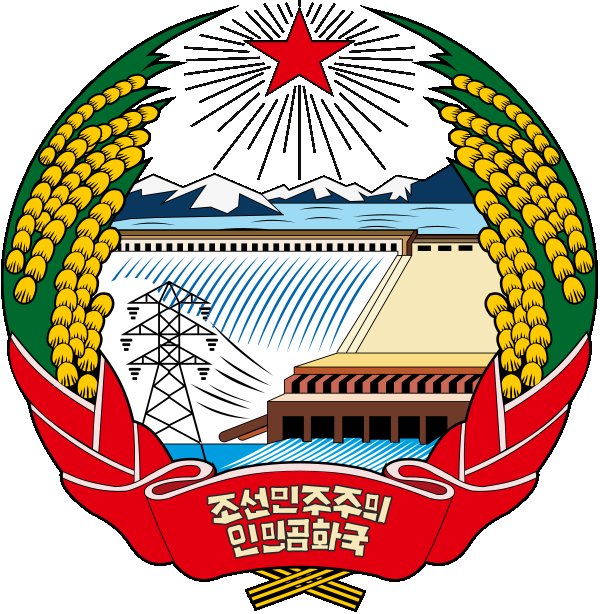
Jae-Young Yoon, Director of the Power System Research Group, Smart Grid Division, Korea Electrotechnology Research Institute (KERI), Seoul, provides an overview of the present status of the DPRK power sector, including newly analyzed data and future prospects of electricity supply and demand in North Korea. This report also establishes several basic inter-Korean energy cooperation plans and considers possible changes in inter-Korean relations as a result of electric power system interactions. The proposed plans included in this report are intended to be a starting point for interconnecting the power systems of the two Koreas and the fulfillment of longstanding grand plans for a Unified Korean Power System (UKPS).
– (DATA-2, measured value of 110 [kV] rating) 88–99 [kV]
– (DATA-3, frequency variations, 60 [Hz] rating) 56.7–59.8[Hz], 51.0–54.0[Hz]
These three sets of measurements demonstrate a 5-20 percent loss in voltage, relative to the design rating. It should be noted that this poor power quality must be upgraded for any power system interconnection between North and South Korea to be realized.
The Power System Configuration of North Korea
Recognizing the difficulty in obtaining DPRK data, this study has made every effort to obtain information through multiple sources to quantify the overall status of the North Korean power system. The main facts that we learned related to the North Korean power system are as follows: (Please note that our estimates, while an advancement over previous studies, will need continuous amendment).
- The electricity infrastructure is outdated, but has seen some minor improvements. Before the mid-1970s some of the transmission lines used in the DPRK dated back to the Japanese colonial period. These lines have now reportedly disappeared. According to an anonymous source, these transmission lines have been reconstructed and used with different voltages. This report has been confirmed by another anonymous source as well.
- The electricity grid infrastructure is decrepit. Power line carrier communications, which are needed to assist in the control of the transmission, distribution, and end use of electricity, seem to be very old and have deteriorated to a very poor condition.
- Some important new systems have been added with help from the international community. A supervisory control and data acquisition (SCADA) computer system, used for the monitoring and distribution of electricity, was supplied from China by the United Nations Development Programme (UNDP) in the 1990s and has been operating in the power plants of Supung, Jangjingang, Pyongyang, and Puckchang as well as in the substations of Chungjin, Pyongyang #2, Pyongyang #3, and Wonjin.
- These new systems still have to interface with aging, made-in-the-DPRK parts. While the SCADA system has a relatively modern electricity control mechanism, the protective relaying systems (which are necessary to identify problems in the system and keep them from spreading) are domestically made in the DPRK and are of unknown quality; in addition, it is unclear how well they have been maintained. This may limit the ability of the DPRK to effectively use the SCADA system to protect its power system.
- The overall configuration of the North Korea power system has been unclear until now, though some researchers have reported data relating to the system. We have studied the available data that has been augmented by related papers and discussions with experts (including North Korean engineers) since 2000. Figure 1 shows our study results for the overall configuration of the North Korean power system, though it will need to be amended continuously as new information becomes available.
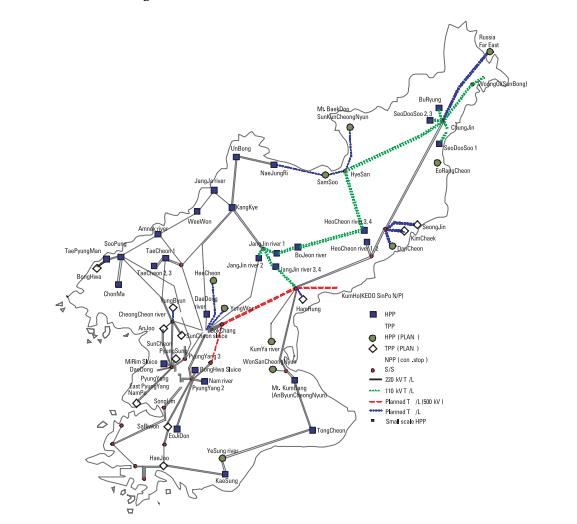
Figure 1. Estimated Configuration of North Korean Power System Network
Source: Dong-wook Park, “Perspectives on Northeast Asian Power System Interconnection” [in Korean], (Korea Electrotechnology Research Institute [KERI], 2008).
Most of the power plants in the DPRK are hydro-power plants (HPP) with more planned in the future. There are also a set of thermal power plants (TPP) around Pyongyang and in the northeast. The electricity grid itself is actually two separate grids that operate at different effective voltages.
An Overview of the North Korea Power Industry
North Korea is generating less energy than it has the nominal capacity to produce. Previous reports on the DPRK power sector based on data cited by the DPRK itself, have overstated the North Korean energy supply. Reports on the total electricity generation capacity in the DPRK vary greatly, ranging from 6,300 MW (Megawatts) to 9,500 MW depending on the source. This study estimates the total power capacity at 7,242 MW based on our most recent analysis of collected data and information. Of this generation capacity, 3,200 MW comes from thermal power plants, and 4,042 MW from hydro plants. Our opinion is that the actual amount of electricity generated in the North is significantly lower than this total capacity. For example, the generating capacity of the hydroelectric power plants along the Abrok River (which is called the Yalu River in China) at the DPRK-China border, including the power plants of Supung, Unbong, Whiwon and Taepyungman, is estimated at 1,780 MW in total. These power plants are jointly operated by China and North Korea, who divide the generated power between the two countries. According to a representative of the joint-hydro company, the actual annual output of the plants has varied between 27 percent and 47 percent of its full generation capacity in recent years. If we average these percentages and assume that the average amount of electricity produced is around 37 percent of the maximum these border-area hydro plants can produce at full capacity, the total annual amount of electricity produced would be 5.7 TWh, of which the DPRK would receive half. However, given the age and condition of the equipment in many of these North Korean power plants, the actual generation may be lower than this estimate.
There is also a significant difference between the total installed capacity or amount of power generation that the plants in North Korea can produce and the actual annual electricity generation (kWh) of North Korean power plants. When we look at formal data from the Bank of Korea (BOK) after 2005 (see Table 1 below), the total installed capacity and generation in 2009 were reported to be 6,930 MW and 23.5 TWh, respectively, lower than the previous year of 2008.
Many power plants in North Korea are antiquated and were constructed using outdated technology and facilities from the former East European bloc and Soviet Union. Many generators are substantially lacking in operational specifications, a fact that has been confirmed by some interviewees. Table 2, based on statistical data plus some estimates, shows a comparison of the power industry sectors in South Korea and North Korea, respectively, as of 2008. This table represents a rather optimistic assessment of generation in the DPRK and our presumption is that, in practical terms, the value of generation shown for the DPRK may be somewhat lower than shown in this table. The values in Table 2 are somewhat different from those in Table 1 because the former includes our estimates and not the formal data used by the BOK. In our estimates, it is unimportant which is more correct or represents the practical status of the North Korean power sector in Table 1 or Table 2. The practical available power capacity and generation amount of the North Korean power sector (considering the present severe conditions) is quite lower than the values shown in Table 1 or Table 2. In Table 2, the South Korean and North Korean power sectors including generation amount, power capacity, transmission and distribution voltage level and frequency are compared.

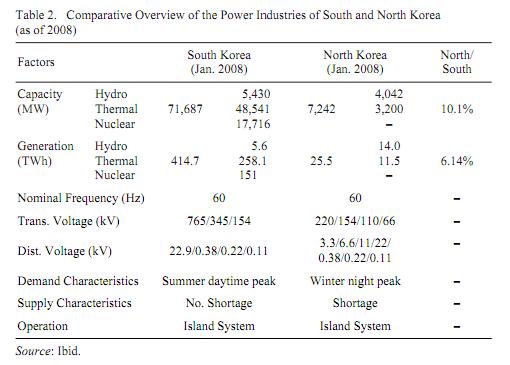
The Bank of Korea study also analyzed North Korean electricity consumption per capita, and the total came to about 600-800 kWh (kilowatt-hours) per person in 2000. At that time, the annual estimated total DPRK electricity generation was around 13–16 TWh and significantly lower than it would be in 2008 (again see Table 2). Surprisingly, 600-800 kWh per capita is not lower than that found in many other developing Asian countries at the time (see Table 3), and also is approximately the same level of consumption that South Korea experienced around 1980. However, at that time South Korea had no problems with electricity shortages or imbalances in power supply and demand. Taken together, these figures suggest that the various statistics of the North Korea power sector from earlier years may have been erroneous and that the actual North Korean level of electricity supply may be somewhat (or perhaps significantly) lower than the Bank of Korea statistics suggest and many observers of the DPRK have been led to believe.
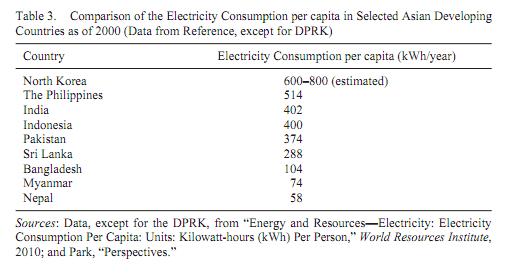
The Power Equipment of North Korea
The power equipment in the DPRK is of low quality, based on outdated Soviet-era designs, and without factories to build replacement parts. For the DPRK grid to be rehabilitated, either on its own or with help from another country, there would be significant expenses involved in making the equipment available in the DPRK compatible with that used elsewhere. Although it is not entirely clear whether the DPRK’s goal has been to increase the output of equipment via mass production or to simply design instruments and equipment for power plants, transformer substations, and transmission lines uniformly, the shapes and dimensions of the equipment used in the power sector in the DPRK generally conform to specific standards. While large facilities, including most of the power plants, were imported from the former East European bloc, some equipment, such as small transformers and motors, are made in the DPRK and exported to developing countries in Southeast Asia. Since most of the factories producing electric equipment were built with designs, equipment, and other facilities provided by the old East European bloc in the 1950s and 1960s, these factories seem to have significantly deteriorated, and most are no longer in operation. These factories shut down for a combination of reasons, most notably the inability of the DPRK to procure replacement and accessory parts after the collapse of the East European countries. Many people with knowledge of North Korea attest that “more than 90% of the factories in North Korea are under lagging conditions, so they should be reconstructed.” This implies that the quality and performance of the equipment manufactured and installed for domestic use in North Korea is significantly inferior to international standards.
Future Prospects of the North Korean Power Sector
This study shows two cases for the future prospects of the North Korean power sector. The first describes a “realistic” scenario for the peaceful reunification of the Korean Peninsula and the other is based on data and plans submitted by North Korean authorities to our KERI researchers. Our data shows that North Korea will face severe electricity shortages unless it receives energy aid from South Korea or another source. The North Korean data predicts surplus and demand based on the development of a nuclear energy supply from the KEDO project. This data would also project a shortfall in energy supply if it we remove nuclear energy from the DPRK predictions.
Political aspects have been considered in the development of the first scenario concerning the unification of South and North Korea. Economic data were developed by analyzing political scenarios of reunification in order to estimate the electricity demand in the DPRK. Among these, a peaceful unification scenario, with economic cooperation between the South and North, was prepared to estimate the rates of economic growth assuming the establishment of a “one nation – two economic systems” model. North Korea’s electricity demand, under the resulting scenario, was estimated using a macroscopic approach and estimates of demand by district have been prepared that considered North Korea’s industries and the composition of its population. The long-term prospects for changes in the power system are calculated assuming that DPRK power plants over 30 years of age are no longer in use, and that the overall annual electricity generation of the DPRK electricity system is increased by implementing maintenance plans. Under the conditions of this scenario, it is estimated that the electricity shortage for the DPRK is 49 TWh and will continue long into the future if no electricity aid from South Korea or other foreign countries is made available.
KERI participated in the North East Asian Region Electrical System Ties (NEAREST) project during 2003-2006. In those years, KERI researchers had the opportunity to discuss power system interconnection possibilities with North Korean engineers and the two groups agreed to exchange their power sector data. In 2005, as a result of this agreement, the North Korea authorities submitted their future plans on their power sector, with data on power generation capacity and amount of energy to be generated. The table submitted, shown in Table 4 below, shows the future prospects for DPRK power-generation in 2010 and 2020. In this table the energy demand is estimated at 79 and 100TWh in 2010 and 2020 respectively. In addition, power-generation capacity is set to reach 9,727 and 12,450 MW including 2,000 and 4,000 MW from nuclear power plants, by 2010 and 2020 respectively. We assume that the 2,000 MW nuclear power plant included by the DPRK in this table for 2010 was the KEDO project and that the 4,000 MW in 2020 was an additional 2,000 MW nuclear plant. Unfortunately, these nuclear plans failed to materialize. Our view is that the overall future plans for DPRK power-generation, as described in Table 3 cannot be realized and are over-estimated.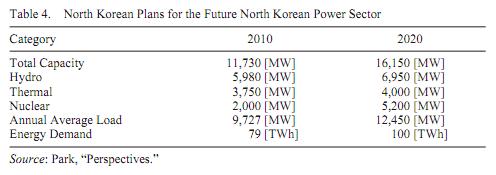
The History of North Korean Electricity Policy
Since the late 1970s, North Korea authorities have made efforts to solve the country’s severe energy crisis, especially the electricity shortage. Achieving this calls for internal and external measures that can only be accomplished with some important policy changes.
The North Korean power mix was composed of 100 percent hydro plants until 1945. From that time through the late 1960s, North Korea had no problem supplying itself with electricity, and maintained the balance of supply and demand. However, starting in the late 1960s the DPRK attempted to build thermal power plants to compensate for the disadvantages of the old hydro plants. At that time, thermal power plants were constructed with the sponsorship of China and the Soviet Union. Even with the installation of thermal power plants (which began in the late 1970s) North Korea still had an energy shortage, especially in the power sector, due to the aging and decreasing reliability of the old hydro plants, energy inefficiencies, and unreasonable energy supply/demand structures. This energy problem has become more acute and now the situation is in crisis.
To overcome this electricity crisis, North Korean authorities changed their policy, starting in the mid-1990s, to encourage the building of small hydro plants nationwide. Because of this policy, more than 7,000 small hydro units were constructed, as shown in Table 5. However, this policy of building small hydro plants appears to have largely been a failure as the efficiency of the plants constructed has been quite low and the plants have had low rates of operation. As a result, the small hydro policy has been discontinued.
The North Korean authorities have recently changed their policies with the aim of overcoming the electricity crisis, reducing power demand and loss, and increasing power supply and efficiency. North Korean authorities have encouraged the complex policies below to help solve the energy crisis.
- The construction of large or medium-sized hydro plants, instead of small hydro plants.
- The remodeling of power facilities (such as power plants and transmission and distribution lines) to increase power supply and energy efficiency.
- The encouragement of ultra-strong demand side management to reduce power demand and losses.
In addition to the above internal countermeasures, North Korean authorities have also considered undertaking international power cooperation with the neighboring countries of South Korea and Russia. This policy could be realized through power cooperation projects such as power system interconnection and support for power plant construction. The North Korean desire for international cooperation is the key reason why the North Korean energy crisis has been linked to, in terms of policies, to power systems interconnection with both South Korea and Russia. Given this political background, at present the final direction of power cooperation policies between South Korea and North Korea are unknown because political agreement, not technological or economic factors, is the key requirement for the implementation of power cooperation.
After 2000, the North Korean authorities sought power cooperation with South Korea and Russia to resolve its ongoing severe power shortage problem. Power system interconnection to save overall electricity costs is a worldwide trend and the private sector in South Korea and Russia have developed the North East Asian Region Electrical System Tie (NEAREST) program as an alternative to solve or mitigate the energy problem. In this consensus, North Korea agrees with the NEAREST program to interconnect the power systems of Northeast Asian countries, including South Korea and Russia. Even though this is a long-term international project, there are good reasons why we should perform a detailed study on the NEAREST program.
The Interconnection Options
In 2005, the ROK government proposed that South Korea could provide 2 GW of electric power to North Korea if the DPRK discarded its plans to develop nuclear weapons. The power supplied to North Korea would be derived from power system interconnections through AC or DC transmission lines. Due to the instability of the North Korean system, these power system interconnections would likely have a negative effect on the stability of the power system in South Korea. As a result, a technical investigation is needed to identify the various problems associated with potential interconnections and to overcome them in advance. To overcome these technical disadvantages and to exchange electricity between the two Koreas, it is first necessary to examine the interconnection options for connecting South and North Korea as well as how those linkages could involve Russia. Russia is particularly interested in interconnection projects, as they would facilitate the export of energy from the resource rich Russian Far East (RFE) and create new capital markets in the RFE. The so-called NEAREST project was formed to investigate power system interconnection options from “South Korea to North Korea to Russia.” This report shows the optimal power system interconnection plan among these three countries, the interconnection types and routes examined, and the advantages/disadvantages as well as addresses the technical and economic aspects of the interconnections.
Interconnection Scenario Hypotheses
To develop “South Korea to North Korea” power system interconnection scenarios that include Russia, the following hypotheses served as a starting point:
- Include North Korea in the power system interconnection
• South Korea, North Korea and Russia will participate in High Voltage Direct Current (HVDC) interconnection systems. South Korea and North Korea could then import Russia’s inexpensive and surplus power. - Exclude North Korea from the power system interconnection, with North Korea only providing the right of way (ROW) for the interconnection.
• South Korea and Russia establish a HVDC interconnection system that passes through North Korea. - Establish a power system interconnection via the East Sea or the Yellow Sea.
• The “South Korea to Russia” power system interconnection bypasses North Korea in order to ensure South Korea’s energy security. The interconnected transmission lines will connect South Korea to Russia via the East Sea or the Yellow Sea without passing through North Korean territory.
• Of the two submarine routings, connecting through the Yellow Sea faces complicated issues related to passing through PRC territory, and is therefore not feasible. - Establish back to back (BTB) (AC to DC to AC) converter stations at borders without interconnected transmission lines.
• Construct BTB converter station at the Russia-North Korea border and the North Korea-South Korea border to exchange power that allows for voltage stabilization and conversion among the interconnected system.
• This method assumes that each country reinforces its power system to exchange power. However, doing so raises reliability concerns in consideration of an North Korea’s weak power system.
Interconnection Options: Scenarios
The following four “South Korea to North Korea to Russia” scenarios were modeled on the above hypotheses:
- The “South Korea-North Korea-Russia” 3-Terminal HVDC interconnection
In this scenario, evaluated during the NEAREST project in 2005, South Korea, North Korea, and Russia engage in power exchanges by constructing an interconnected power system. The converter stations located in Vladivostok, Pyongyang, and Seoul create a Multi-Terminal HVDC system as shown in Figure 2. A DC overhead transmission line connects Vladivostok, Pyongyang, and South Korea. The line length is 1,010 km between Russia and North Korea and 250 km between South and North Korea. Russia supplies power to both South Korea and North Korea with the power flow consistently maintained in one direction. - The “South Korea to Russia” Two-Terminal HVDC interconnection, passing through North Korea
In this scenario, the “South Korea to Russia” power system interconnection is established without direct North Korean participation in power transfers. North Korea only provides the right of way for the interconnected transmission lines, and converter stations are set up in Vladivostok and Seoul. The interconnected transmission line is 1,260km long. Figure 3 describes the configuration of the Two-Terminal HVDC system. Scenario 2 reduces investment costs because it utilizes less converter stations than the 3-Terminal HVDC system of Scenario 1; in addition, the two 2-Terminal HVDC system is technologically simpler to operate. However, from a South Korean point of view, this scenario suffers from a major drawback in terms of ROK energy security because the interconnected lines must pass through North Korean territory and the power flows could be subject to interruption by the DPRK authorities. - The “South Korea to Russia” Two-Terminal HVDC interconnection via the East Sea
This scenario is very similar to Scenario 2 except that the transmission line bypasses North Korea in order to eliminate any energy security problems. South Korea can connect to Russia via the East Sea or the Yellow Sea; the East Sea route was selected for investigation because the Yellow Sea route must pass through PRC territory. As shown in Figure 4, the converter stations are located at Vladivostok and on the South Korean shores of the East Sea. The interconnected line is 1,150km long, which consists mostly of undersea cables and some overhead lines. This scenario offers better energy security for power importation from Russia; however, the overall cost for construction will be higher than in Scenario 2 due to the cost of constructing undersea cables. - The “South Korea to North Korea to Far East Russia (FER)” BTB-HVDC interconnection
This scenario considered a power system interconnection using the BTB system at the borders without building new long-distance HVDC transmission lines for the interconnection. As depicted in Figure 5, this BTB interconnection provides a simpler solution; however, it raises the question of whether or not North Korea’s weak power system can guarantee a reliable power exchange. If North Korea’s internal power system is not sufficiently strong, the power North Korea receives from Russia may not be reliably transmitted to South Korea. This scenario is built on the assumption that Russia, North Korea, and South Korea independently and sufficiently strengthen their internal power systems to allow the power exchange to function reliably.




Of the four possible scenarios, Scenario 1 seems to be the most viable when considering the various requirements and conditions. This scenario involves the construction and use of three converter stations located in Vladivostok, Pyongyang, and Seoul, respectively. The transfer system would allow for a power exchange capacity ranging from about 3 to 4 GW. This capacity of 3 to 4 GW exceeds the 2 GW that South Korea announced it could export to the DPRK via an interconnection between the countries; however, this power is the total exported from Russia to both Koreas so the amount of power going to the DPRK itself is not fully specified. Table 6 summarizes the four scenarios.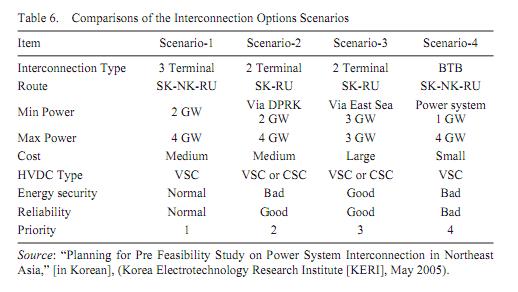
Future Power Systems Cooperation between South and North Korea
- This study estimates the total power generation capacity in the DPRK as of 2008 to be 7,242 MW, based on the recent analysis of the collected data and information, with thermal power generation capacity at 3,200 MW, and hydro at 4,042 MW in total.
- This report shows four scenarios that describe the optimal power system interconnection plans among the three countries as well as the interconnection options between South Korea and North Korea used to overcome technical difficulties related to interconnecting the three systems to exchange electricity from Russia to North Korea and South Korea. Of the four possible scenarios, Scenario 1 seems to be the most reasonable, considering the various requirements and conditions associated with the venture. The transfer system would allow for a power exchange ranging from about 3 to 4 GW. This capacity of 3 to 4 GW exceeds the 2 GW that South Korea announced it could export to the DPRK via an interconnection between the countries; however, this energy is the total exported from Russia to both Koreas so that the amount of power allotted to the DPRK itself is not fully specified.
- In 2005, North Korean authorities submitted their future power sector plans related to power generation capacity and the amount of electricity generated. The table submitted by North Korean authorities shows the future plans for forecasted power generation in 2010 and 2020. In this table, the total electricity demand amounts to 79 and 100 TWh in 2010 and 2020, respectively. In addition, the projected/planned power generation capacity is listed at 9,727 MW and 12,450 MW in 2010 and 2020 respectively, including 2,000 and 4,000 MW generated by nuclear power plants in 2010 and 2020. We can assume that the 2,000 MW nuclear power plant in 2010 referred to the KEDO project, and the 4,000 MW in 2020 means an additional 2,000 MW nuclear plant. Unfortunately, the KEDO project has been delayed indefinitely and perhaps totally collapsed due to the breakdown of talks regarding DPRK’s nuclear weapons. In addition, we will believe that the DPRK’s future plans for the power sector (as described in Table 4) cannot be realized on the time scale listed and are over-estimated.
This report is to provide an overview of the present status of the DPRK power sector and establish basic cooperation plans. The policies of the South Korean government to improve this difficult situation should be developed to overcome the DPRK electricity shortage. However, because of the strong political backlash caused by the sinking of the Cheonan and the Yeonpyeong Island attack in 2010, virtually all cooperation (including energy cooperation between the two Koreas) has stopped. Nevertheless, we believe a basic plan to solve the DPRK energy crisis should be continuously discussed and eventually established by the ROK in consideration of the total costs of before and after reunification as well as the future peace and stability of the Korean peninsula.
[2] Jae-Young Yoon, H. Y. Kim and Dong-wook Park, Perspectives for inter-country power exchange in North-East Asia (a report presented at the Senior Officials Meeting, United Nations Economic and Social Commission for Asia and the Pacific [UNESCAP], April 2003).
[3] Dong-wook park, “Perspectives on Northeast Asian Power System Interconnection” [in Korean], (Korea Electrotechnology Research Institute [KERI], 2008).
[4] Jae Young Yoon, Perspectives on Inter-Country Power Exchange in North-East Asia (a report presented to the United Nations Economic and Social Commission for Asia and the Pacific [UNESCP],Vladivostok, April 7–10, 2003).
[5] “Development of Co-operational Infrastructure on NEAREST” [in Korean], (Korea Electrotechnology Research Institute [KERI], 2009).
[6] “Energy and Resources—Electricity: Electricity Consumption Per Capita: Units: Kilowatthours (kWh) per Person,” World Resources Institute, 2010.

